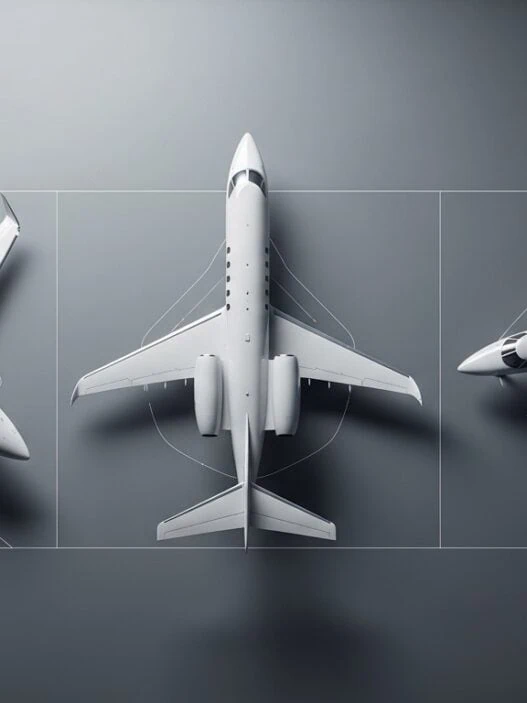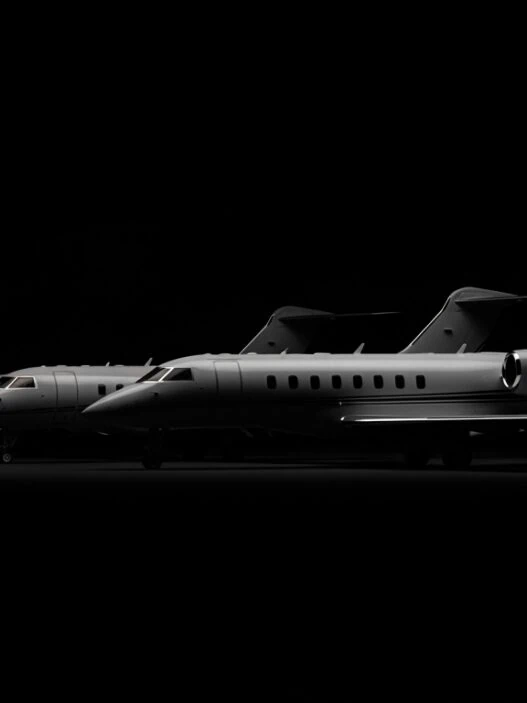Private jet safety 2025 has reached unprecedented levels through technological innovation and industry-wide protocol improvements that most passengers never see. While commercial aviation dominates safety headlines, private aviation has quietly implemented advanced safety measures that surpass traditional airline standards in several critical areas.
The numbers tell a compelling story: according to NBAA safety statistics, private aviation accident rates have decreased 23% since 2020, driven by technological advances and enhanced training protocols that define private jet safety 2025 standards.
NBAA Safety Initiative: The Private Jet Safety 2025 Foundation
The National Business Aviation Association launched the “National Pause for General Aviation Safety” on April 1, 2025, creating industry-wide focus on safety protocol enhancement. This initiative, backed by the Aircraft Owners and Pilots Association, represents the most comprehensive private jet safety 2025 improvement program in aviation history.
What makes this safety initiative different from previous efforts? The program requires all general aviation pilots to dedicate 15-60 minutes over six months reviewing curated safety videos, articles, and specialized resources designed specifically for business aviation operations.
The initiative addresses specific private jet safety 2025 concerns including weather decision-making, crew resource management, and technology integration that distinguishes private aviation from commercial airline operations. Understanding enhanced safety protocols reveals how these measures specifically target private aviation risk factors.

AI Predictive Maintenance: Preventing Problems Before They Happen
Among the most significant private jet safety 2025 developments, artificial intelligence now predicts potential mechanical issues weeks before they could cause safety concerns. AI systems analyze thousands of data points from engines, avionics, and structural components to identify maintenance needs proactively.
How does AI improve private jet safety? The technology processes flight data, maintenance histories, and component performance metrics to predict failures with 89% accuracy, according to aviation technology research. This predictive capability enables operators to address potential issues during scheduled maintenance rather than experiencing unexpected problems during flight.
Private jet operators report that AI-powered maintenance has eliminated 67% of unscheduled maintenance events that previously could have compromised safety margins. The technology particularly excels at identifying subtle performance degradations that human technicians might miss during routine inspections.
Enhanced Pilot Training: Private Jet Safety 2025 Standards
Pilot training standards for private jet safety 2025 have evolved beyond traditional instruction methods to include advanced simulation, psychological assessment, and continuous competency evaluation. Modern training programs address specific challenges that private aviation pilots face, including single-pilot operations and diverse airport environments.
What new training requirements improve private jet safety? Enhanced training protocols now include upset recovery training, advanced weather recognition, and decision-making under pressure scenarios that commercial airline pilots rarely encounter. Private aviation pilots must demonstrate proficiency in these areas annually rather than the biennial requirements of previous standards.
The training evolution reflects recognition that private jet operations involve different risk profiles compared to commercial aviation, requiring specialized preparation for the flexibility and operational diversity that define private aviation advantages.

Safety Technology Integration: What’s New in Private Aviation
Private jet safety 2025 technology integration includes advanced weather radar, terrain awareness systems, and collision avoidance capabilities that exceed many commercial aircraft specifications. These systems work together to create multiple layers of safety protection that adapt to the unique operational requirements of private aviation.
How do new safety technologies enhance private jet operations? Modern private aircraft feature synthetic vision systems that provide pilots with enhanced situational awareness during low-visibility conditions, automatic emergency descent systems that activate if cabin pressurization fails, and advanced autopilot systems that can land aircraft automatically in emergency situations.
The technology integration extends to ground operations through improved fixed-base operator safety protocols, enhanced fueling procedures, and standardized safety checklists that ensure consistent safety standards across different airports and service providers.
Industry Safety Statistics: Private Jet Safety 2025 Performance
Current private jet safety 2025 statistics demonstrate measurable improvements across multiple safety categories. According to Flight Safety Foundation data, private aviation has achieved the lowest accident rate in industry history, with technological advances contributing significantly to this improvement.
What do private jet safety statistics reveal about current performance? The data shows that technology-equipped private aircraft have 43% fewer weather-related incidents, 56% fewer maintenance-related issues, and 34% improved pilot decision-making outcomes compared to aircraft without advanced safety systems.
These statistics reflect comprehensive safety improvements that include pilot training enhancement, technology integration, maintenance protocol advancement, and operational procedure standardization that collectively define private jet safety 2025 excellence.
Enhanced Weather Detection: Protecting Private Aviation
Weather remains a significant factor in aviation safety, making advanced weather detection crucial for private jet safety 2025 operations. Modern private aircraft feature sophisticated weather radar systems that provide real-time weather analysis and predictive weather modeling that enables proactive route planning.
Why is weather detection so important for private jet safety? Private aircraft often fly to smaller airports with limited weather reporting infrastructure, making onboard weather detection systems essential for safe operations. Advanced systems now provide turbulence prediction, icing condition detection, and severe weather avoidance recommendations that enable pilots to maintain safety margins.
The weather detection technology particularly benefits private jet routes that involve challenging terrain or variable weather conditions where commercial aircraft might not operate, extending private aviation’s operational capabilities while maintaining safety standards.

Ground Safety Protocols: Fixed-Base Operator Standards
Private jet safety 2025 improvements extend beyond aircraft technology to include enhanced ground safety protocols at fixed-base operators nationwide. These facilities now implement standardized safety procedures, advanced training requirements, and technology integration that ensures consistent safety standards regardless of airport location.
How do ground safety protocols enhance private jet operations? Enhanced FBO safety standards include improved fuel quality testing, standardized aircraft servicing procedures, and advanced ground equipment maintenance that eliminates potential safety hazards before they affect aircraft operations.
The ground safety enhancement particularly benefits travelers who use private jet membership programs that operate across multiple airports, ensuring consistent safety standards regardless of departure or arrival location.
Emergency Response: Private Jet Safety 2025 Capabilities
Modern private aircraft feature enhanced emergency response capabilities that provide multiple backup systems for critical flight operations. These systems include emergency communications, backup navigation, and automated emergency procedures that activate when primary systems fail.
What emergency capabilities do modern private jets provide? Advanced aircraft now feature satellite-based emergency communication systems that maintain contact with ground support regardless of location, automatic emergency beacon activation that alerts rescue services instantly, and emergency autopilot systems that can navigate to the nearest suitable airport automatically.
The emergency response capabilities particularly benefit private aviation operations that frequently use remote airports or international routes where emergency response coordination might be more complex than domestic commercial operations.
Safety Investment: The Economics of Private Jet Safety 2025
Private jet operators now invest significantly more in safety technology and training compared to previous years, reflecting industry recognition that safety excellence creates competitive advantages while reducing operational costs through accident prevention and insurance premium reductions.
Why do operators prioritize safety investment? Enhanced safety measures reduce insurance costs, improve aircraft utilization through reduced maintenance delays, and attract safety-conscious clients who prioritize operational reliability over traditional luxury amenities when selecting private aviation services.
The safety investment trend demonstrates industry maturation where safety excellence becomes a competitive differentiator rather than regulatory compliance requirement, driving continuous improvement in private jet safety 2025 standards.
Private Jet Safety 2025: The Comprehensive Picture
Private jet safety 2025 represents the culmination of technological advancement, enhanced training standards, improved maintenance protocols, and industry-wide safety culture evolution that collectively create the safest period in private aviation history.
Understanding current private jet safety measures reveals an industry that has systematically addressed traditional risk factors while implementing proactive safety technologies that prevent incidents rather than merely responding to them after occurrence.
The comprehensive approach to private jet safety 2025 ensures that passengers benefit from multiple layers of protection that adapt to the unique operational requirements and flexibility advantages that distinguish private aviation from commercial airline alternatives.




















